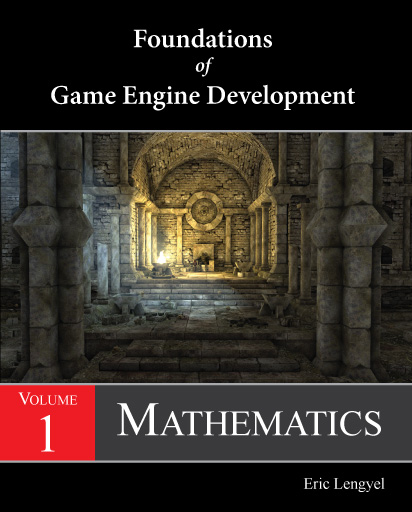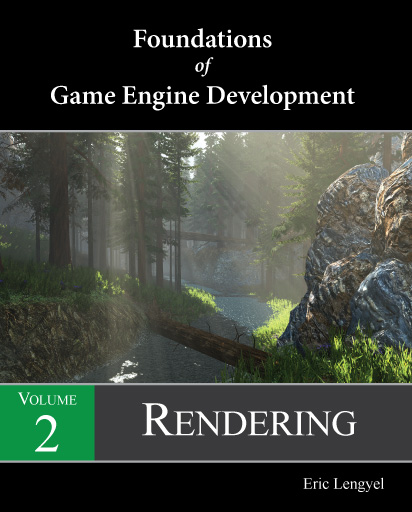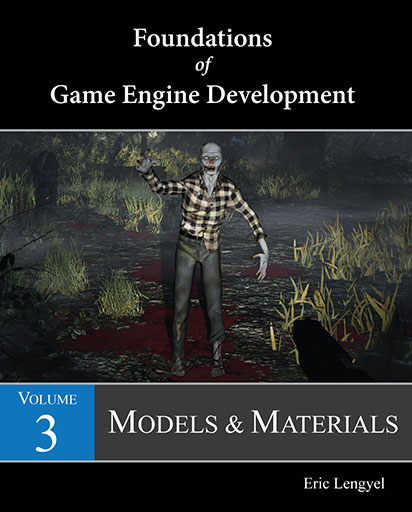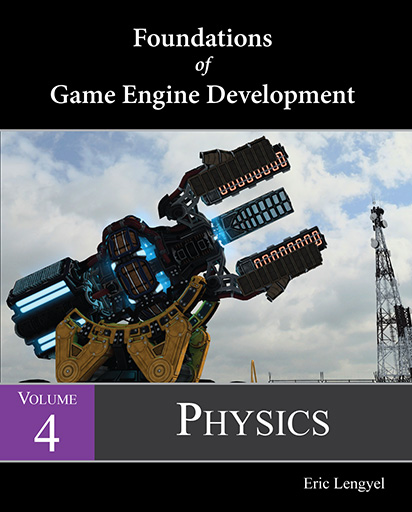



 |
 |
 |
 |
Foundations of Game Engine DevelopmentTM is a book series currently being written by Eric Lengyel. Its four volumes cover the essentials of game engine development in the broad areas of mathematics, rendering, models & materials, and physics.
The mathematical expressions in FGED1 and FGED2 were remastered with the author’s Radical Pie equation editor in late 2025.
Browse figures from the FGED series
Join the Discord server for discussions about topics in FGED
 |
Volume 1: Mathematics View sample section about normal vectors (PDF) The first volume, known as FGED1, provides a detailed introduction to the mathematics used by modern game engine programmers. The book covers the topics of linear algebra (vectors and matrices), transforms, and geometry in a conventional manner. This is followed by an introduction to Grassmann algebra and geometric algebra, where a deeper understanding can be found along with explanations for why some pieces of the conventional mathematics aren’t quite right. Below is the full table of contents. The book includes 49 figures, 36 code snippets, 62 exercises, and 327 numbered equations. Preface Chapter 1: Vectors and Matrices
Chapter 2: Transforms
Chapter 3: Geometry
Chapter 4: Advanced Algebra
Index |
 |
Volume 2: Rendering View sample sections about tangent space, bump mapping, and parallax mapping (PDF) FGED2 explores the vast subject of real-time rendering in modern game engines. The book provides a detailed introduction to color science, world structure, projections, shading, light sources, shadows, fog, and visibility methods. This is followed by extensive discussions of a variety of advanced rendering techniques that include volumetric effects, atmospheric shadowing, ambient occlusion, motion blur, and isosurface extraction. Below is the full table of contents. The book includes 138 figures, 82 code snippets, 52 exercises, and 424 numbered equations. Preface Chapter 5: Graphics Processing
Chapter 6: Projections
Chapter 7: Shaders
Chapter 8: Lighting and Shadows
Chapter 9: Visibility and Occlusion
Chapter 10: Advanced Rendering
Index |
 |
Volume 3: Models & Materials Below is a list of topics that are planned to be covered in the third volume.
|
 |
Volume 4: Physics Below is a list of topics that are planned to be covered in the fourth volume.
|